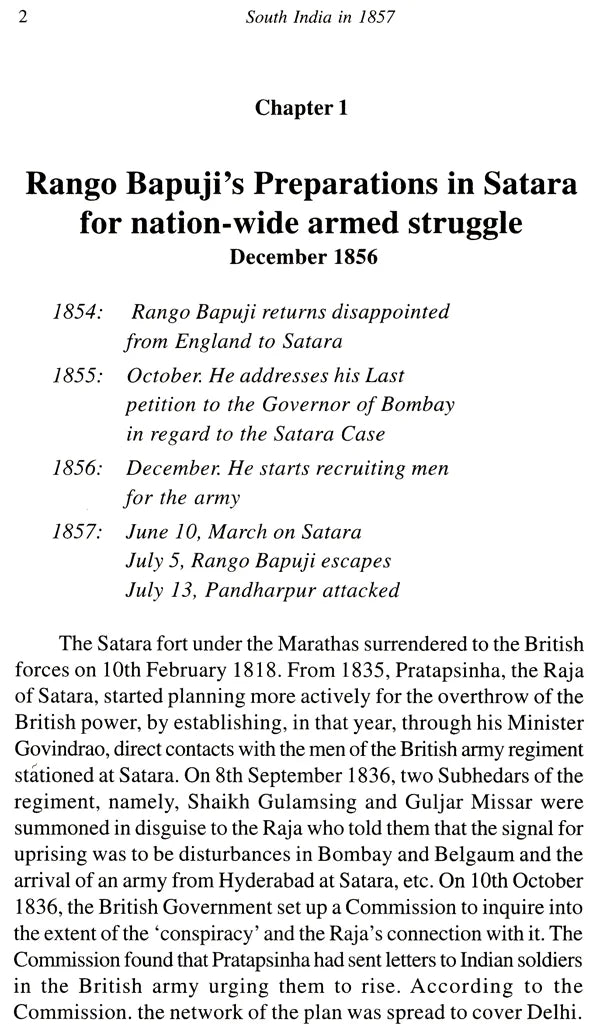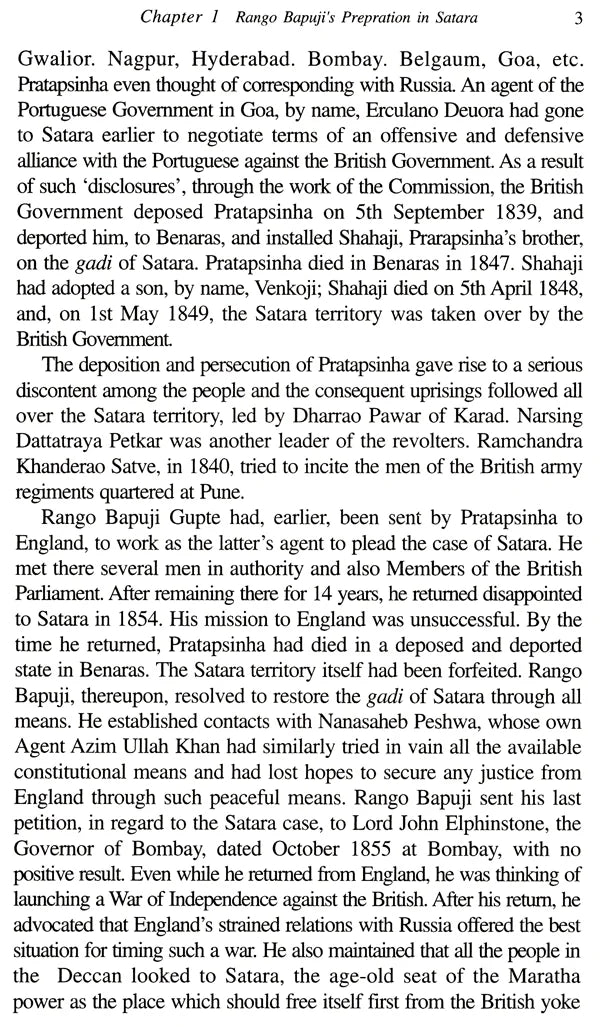SAKSHI Trust - Bangalore
South India in 1857 War of Independence
South India in 1857 War of Independence
Couldn't load pickup availability
The Lokmanya Tilak Smarak Trust, Pune, has undertaken the work of researching into the history of freedom movement in India in different parts of the country, with special emphasis on finding out the particulars regarding the contributions made by the common people and their leaders at the local level. The work covers the whole of India. Dr. V. D. Divekar has taken up the responsibility of organizing this work, on behalf of the Trust.
As part of this work, freedom fighters who were transported to the Andamans under the British rule, and who are still alive, were personally interviewed by him by visiting their places of residence in different parts of the country, including Bangladesh. A conference of them was convened at Bombay on 26-27 February 1991, wherein 55 of them, with their families, participated. A follow-up correspondence with them is continuing.
The official brochure brought out by the Andaman Administration lists about 25 freedom fighters who were transported to the Andamans in 1857. The research at the Tilak Smarak Trust in this regard has now uncovered more than 800 such names who were sent there from different regions in India and who belonged to different communities, for taking part in the 1857 War of Independence.
When work was taken up in hand, more and more events and names from South India started coming to light for the first time. It was, therefore, decided to pay particular attention to this rather research wise 'neglected' region.
It may be noted here that, out of the names of 800 Transportees to the Andamans in '1857', so far discovered, a little more than 250 are from South India. Similarly, a list of about 230 `Martyrs of (besides names of hundreds of others involved) from South India is presented in this work. It was thought by scholars from the days of Vinayak Damodar Savarkar (in 1907) to Surendra Nath Sen (in 1957) and even thereafter, that, very little happened in South India in '1857'. This is probably because the archives in South India, like those at Madras, Hyderabad, Bangalore, Panaji etc, had remained, so far, more or less untapped in this regard. No doubt, the army revolts were more in number in North India, yet the popular uprisings in south India were not fewer as the present work shows. The moral issues involved in the War of 1857 throughout India, either in the north or in the south, however, were the same. As Savarkar has precisely pointed out in his work, they were: protection of Swarajya and Swadharma on the Indian side; and expansion and consolidation of empire on the British side.
Research on the part played by South India in the freedom struggle is being undertaken at present by Dr. Divekar, as part of the total programme. Here again, the emphasis is on the common people and their local leaders. The present work is a product of his researches into this field. It brings to light for the first time not only the names of hundreds of freedom fighters, who sacrificed their lives in the '1857' War of Independence in South India, but also the fact, which is of equal importance, that, they belonged to different religions, castes, creeds, regions, language groups, etc. Hindus and Muslims fought shoulder to shoulder in this War; so also other sections of society, as tribals, army men, peasants, etc.
Thus, the work undertaken by the Lokmanya Tilak Smarak Trust is of historical nature, and still, it has a practical approach. In simple terms, it aims at promoting common feelings among the people, by bringing to light the great sacrifices made by their forefathers, of whatever race, region or religion in India, so that Mother India be free from the foreign yoke.
Technical Information
Technical Information
Author: Dr. V D Divekar
Translator:
Language: English
ISBN: 8179941884
Know More
Know More
























